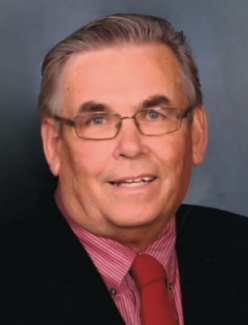A long-sought goal for Nebraska’s dairy producers has been achieved.
DARI Processing LLC hosted a groundbreaking at the site of its new dairy processing facility in Seward on June 18 — an event celebrated by Nebraska State Dairy Association, state and local dairy leaders, and industry partners.
This new $165 million facility, developed by a team of fourth-generation Nebraska dairy farmers, will produce Moo’V Real Milk, processing 1.8 million pounds of milk a day. The new plant is set to be operational early in 2027 and will employ 75 people.
Moo’V is an ultra-filtered, premium, lactose-free milk, high in protein and lower in sugar. It is available now in more than 180 Hy-Vee grocery stores and scores of convenience stores throughout the Upper Midwest.
For decades, Nebraska dairy producers have been seeking to gain new dairy processing in the state, hoping, in short, that if you build it, they will come. Wishing to expand the dairy herd, processing has typically been the obstacle to substantial herd growth.
Over the past 12 years, dairies in the state have decreased from 55,000 cows on 195 licensed dairies in 2013 to 49,000 cows on 77 dairies in March 2025. The peak number of dairy cows in the state came back in 1936 when there were over 800,000.
“The DARI Processing groundbreaking was an historic day for Nebraska’s dairy sector,” says Kris Bousquet, NSDA executive director. “Nebraska dairy producers have struggled with market competition and a lack of processing for decades. Our farmer leaders made it a priority to reinvigorate the industry by focusing on processor and farmer recruitment.”
Nebraska’s Alliance for the Future of Agriculture (AFAN) reported a recent study by the University of Nebraska estimates that a processor this size would have an impact of $140 million — that’s $12,000 of economic impact for every new dairy cow in the state. Much of the state’s milk is being transported out of state for processing, but thanks to this new venture, that may change.
The plant is being built by the Tuls family. Founder Todd Tuls is a third-generation farmer who owns and operates dairies in Nebraska, Wisconsin and Kansas. He began his journey in dairying bottle-feeding calves at a 400-cow dairy farm in Chino, Calif., when he was in middle school.
In 2000, Tuls and his family moved to Nebraska and started their Double Dutch Dairy. Now Tuls’ son, TJ, works alongside his father in the business as DARI Processing co-owner and CEO.
The “Grow Nebraska Dairy” effort, aimed at adding new processing in the state and expanding the current dairy cow herd, has been around for more than 20 years.
The effort was begun by then-NSDA executive director Rod Johnson and is comprised of numerous state institutions and agencies, such as the Nebraska Department of Agriculture and AFAN working with NSDA on recruitment, particularly of new processors.
“I don’t think I can put into words how big of a development this is for Nebraska and how lucky we are to have the Tuls family in our state,” Bousquet says. “This is the first green field milk plant built in our state since the 1960s, so this groundbreaking is a truly remarkable feat.”
He adds, “Projects of this size and scope take a long time to develop, as we have been working on DARI Processing since 2021. These things don’t happen overnight, and it’s a true story of persistence and passion because we all knew that our efforts would make a difference to multiple farm families and their livelihoods.”
To get started, DARI will utilize milk from Tuls dairies, then as the plant runs well, they will bring on more milk from other producers.
“This is a huge development that puts Nebraska on the map for future growth,” Bousquet says. “Where else can you find the most irrigated acres in the U.S.? Where else can you find the water availability greater than we have here? You can’t.”
Add on the demand for manure by Nebraska crop producers and a positive business environment for livestock production and dairying, and Bousquet says this is all a winning combination for dairy farmers.
“If you’re looking to expand your operation or relocate to another region, you owe it to your business to look at Nebraska because it is the next dairy frontier,” he adds.
Source: FarmProgress.com / Curt Arens



